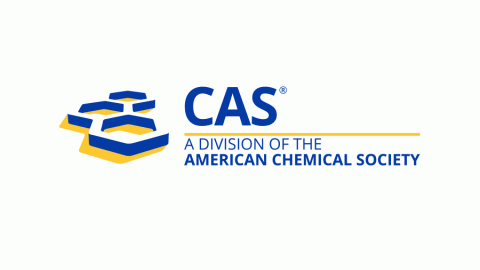A short-term survival analysis of severe patients with acute vascular event admitted on intensive care unit department
DOI:
https://doi.org/10.55779/nsb15111394Keywords:
intensive care unit, myocardial infarction, stroke, survival, vascular eventAbstract
The study evaluated the short-term survival during hospitalization period of the patients admitted on the intensive care unit department with an acute vascular event in comparison with other pathologies. We developed a retrospective cohort study with longitudinal design on 178 subjects admitted in an intensive care unit department. The patients were divided according the presence (33 patients) or absence (145 patients) of an acute vascular event (myocardial infarction or stroke). The survival during the hospitalization period was evaluated also considering the presence of diabetes (58 patients) or diabetes with complications (54 patients). The survival was presented as probability to survive during hospitalization period and median survival time. Logrank test was used to compare the groups. Patients with myocardial infarction had the average age of 60.57±7.97 years old, with 100% mortality during the hospitalisation period and a median survival time of 16 days. The patients with stroke were 66.34±14.12 years old with 46.15% survival probability and median survival time of 26 days; respectively patients without vascular event were 65.52±15.81 years old, had a survival probability of 46.89% and a median survival time of 28 days. Considering all the patients with vascular events, survival probability was 36.36%. Diabetes, the presence of arterial hypertension or diabetic complications does not influence significantly the survival in this sample (Logrank test, p>0.05). Survival of patients with acute vascular event is comparable with that of the patients admitted on intensive care unit for other health condition. A poor prognostic was observed for myocardial infarction.
Metrics
References
Berlin C, Panczak R, Hasler R, Zwahlen M (2016). Do acute myocardial infarction and stroke mortality vary by distance to hospitals in Switzerland? Results from the Swiss National Cohort Study. British Medical Journal 6(11):e013090. https://doi.org/10.1136/bmjopen-2016-013090
Cho KH, Nam CM, Lee SG, Kim TH, Lee SH, Park EC (2019). Measuring of quality of care in patients with stroke and acute myocardial infarction: An application of algebra effectiveness model. Medicine 98(20):e15353. https://doi.org/10.1097/MD.0000000000015353
Egi M, Bellomo R, Stachowski E, French CJ, Hart GK, Hegarty C, Bailey M (2008). Blood glucose concentration and outcome of critical illness: the impact of diabetes. Critical Care Medicine 36:2249-2255. https://doi.org/10.1097/CCM.0b013e318181039a
Falciglia M, Freyberg RW, Almenoff PL, D'Alessio DA, Render ML (2009). Hyperglycemia-related mortality in critically ill patients varies with admission diagnosis. Critical Care Medicine 37:3001-3009. https://doi.org/10.1097/CCM.0b013e3181b083f7
Graham BB, Keniston A, Gajic O, Trillo Alvarez CA, Medvedev S, Douglas IS (2010). Diabetes mellitus does not adversely affect outcomes from a critical illness. Critical Care Medicine 38:16-24. https://doi.org/10.1097/CCM.0b013e3181b9eaa5
Halpern NA, Pastores SM (2010). Critical care medicine in the United States 2000-2005: an analysis of bed numbers, occupancy rates, payer mix, and costs. Critical Care Medicine 38:65-71. https://doi.org/10.1097/CCM.0b013e3181b090d0
Haslam D (2010). Obesity and diabetes: the links and common approaches. Primary Care Diabetes 4(2):105-112. https://doi.org/10.1016/j.pcd.2010.04.002
Hegazi R, El-Gamal M, Abdel-Hady N, Hamdy O (2015). Epidemiology of and risk factors for type 2 diabetes in Egypt. Annals of Global Health 81(6):814-820. https://doi.org/10.1016/j.aogh.2015.12.011
Ho WM, Lin JR, Wang HH, Liou CW, Chang KC, Lee JD, ... Lee TH (2016). Prediction of in-hospital stroke mortality in critical care unit. SpringerPlus 5(1):1051. https://doi.org/10.1186/s40064-016-2687-2
Khassawneh B, Ibnian A, Yassin A, Al-Mistarehi A, E’Leimat I, Ali M, ... El-Salem K (2019). The outcome of patients with acute stroke requiring intensive care unit admission. European Respiratory Journal https://doi.org/10.1183/13993003.congress-2019.PA2283
Krinsley JS (2003). Association between hyperglycemia and increased hospital mortality in a heterogeneous population of critically ill patients. Mayo Clinic Proceedings 78:1471-1478. https://doi.org/10.4065/78.12.1471
Kristoffersen DT, Helgeland J, Clench-Aas J, Laake P, Veierød M (2012). Comparing hospital mortality – how to count does matter for patients hospitalized for acute myocardial infarction (AMI), stroke and hip fracture. BMC Health Service Research 12:364. https://doi.org/10.1186/1472-6963-12-364
Maahs DM, West NA, Lawrence JM, Mayer-Davis EJ (2010). Chapter 1: epidemiology of type 1 diabetes. Endocrinology & Metabolism Clinics of North America 39(3):481-497. https://doi.org/10.1016/j.ecl.2010.05.011
Mozaffarian D, Benjamin EJ, Go AS, Arnett DK, Blaha MJ, Cushman M, ... Turner MB (2015). Heart disease and stroke statistics – 2015 update: a report from the American Heart Association. Circulation 131:e29-e322
Ozougwu JC, Obimba KC, Belonwu CD, Unakalamba CB (2013). The pathogenesis and pathophysiology of type 1 and type 2 diabetes mellitus. Journal of Physiology and Pathophysiology 4:46-57. https://doi.org/10.5897/JPAP2013.0001
Rady MY, Johnson DJ, Patel BM, Larson JS, Helmers RA (2005). Influence of individual characteristics on outcome of glycemic control in intensive care unit patients with or without diabetes mellitus. Mayo Clinic Proceedings 80:1558-1567. https://doi.org/10.4065/80.12.1558
Reed J, Bain S, Kanamarlapudi V (2021). A review of current trends with type 2 diabetes epidemiology, aetiology, pathogenesis, treatments and future perspectives. DMSO. Diabetes, Metabolic Syndrome and Obesity 4:3567-3602. https://doi.org/10.2147/DMSO.S319895
Saleh M, Ambrose JA (2018). Understanding myocardial infarction. F1000 Research 7. https://doi.org/10.12688/f1000research.15096.1
Siegelaar SE, Hickmann M, Hoekstra JB, Holleman F, DeVries JH (2011). The effect of diabetes on mortality in critically ill patients: a systematic review and meta-analysis. Critical Care 15(5):R205. https://doi.org/10.1186/cc10440
Thompson A, Kanamarlapudi V (2013). Type 2 diabetes mellitus and glucagon like peptide-1 receptor signalling. Clinical and Experimental Pharmacology 3:138. https://doi.org/10.4172/2161-1459.1000138
Thygesen K, Alpert JS, Jaffe AS, Simoons ML, Chaitman BR, White HD (2012). Third universal definition of myocardial infarction. European Heart Journal 33:2551-2567. https://doi.org/10.1093/eurheartj/ehs184
Downloads
Published
How to Cite
Issue
Section
License
Copyright (c) 2023 Alexandra SAIOC, Vlad-Ionuţ NECHITA, Cosmin I. PUIA

This work is licensed under a Creative Commons Attribution 4.0 International License.
Papers published in Notulae Scientia Biologicae are Open-Access, distributed under the terms and conditions of the Creative Commons Attribution License.
© Articles by the authors; licensee SMTCT, Cluj-Napoca, Romania. The journal allows the author(s) to hold the copyright/to retain publishing rights without restriction.
License:
Open Access Journal - the journal offers free, immediate, and unrestricted access to peer-reviewed research and scholarly work, due SMTCT supports to increase the visibility, accessibility and reputation of the researchers, regardless of geography and their budgets. Users are allowed to read, download, copy, distribute, print, search, or link to the full texts of the articles, or use them for any other lawful purpose, without asking prior permission from the publisher or the author.













.png)















